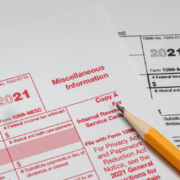TAX RATES INCREASE IN 2013
As part of the 2012 American Taxpayer Relief Act (ATRA), tax rates, both ordinary and capital gains, increased in 2013 for higher income taxpayers whose taxable income exceeds the income threshold for their filing status.
The thresholds at which taxpayers are subject to the top ordinary and long-term capital gains tax rates are $450,000 for joint filers and surviving spouses, $425,000 for heads of household, $400,000 for single filers, and $225,000 for married couples filing separately.
These increases will have the following impact on ordinary income and long-term capital gains rates:
- Ordinary Income Rates – Prior to the law change, there were six tax brackets: 10, 15, 25, 28, 33 and 35%. The ATRA added a new top rate of 39.6%. Thus, higher-income taxpayers, to the extent their taxable income exceeds the income threshold for their filing status, will be subject to the new 39.6% rate (up 4.6% from previous 35% top rate).
Example: Jack and Sally, who are filing jointly, have an ordinary taxable income of $600,000. Their income above $450,000 will be subject to the 39.6% tax rate. Thus, they will see a tax increase of $6,900 (($600,000 $450,000) x 4.6%) as a result of the new tax bracket.
- Capital Gains and Dividends – Prior to the law change, the long-term capital gain was zero for taxpayers in the 10 and 15% ordinary income tax bracket and 15% for taxpayers with taxable income above the 15% bracket. The ATRA increased the top rate for long-term capital gains and qualified dividends to 20% (up from 15%) for taxpayers with incomes exceeding the threshold for their filing status. Thus, for years beginning in 2013, there will be three long-term capital gains rates: 0, 15, and 20%, with the 20% applying to higher-income taxpayers.
Example: Howard, a single individual, retired this year and sold his rental property, which he had owned for a long time, for a profit of $700,000. Even though his income is generally in a lower-income tax bracket, the profit from the sale itself pushed his income above the $400,000 threshold for single taxpayers, and to the extent his income exceeds the $400,000 threshold, he will be subject to the increased capital gains rate. Had Howard’s other taxable income been $50,000, he would have had a total income of $750,000, of which $350,000 exceeds the 20% long-term CG rate threshold. As a result, Howard pays the 20% rate on $350,000, resulting in an increase of $17,500 ($350,000 x 5%) over what he would have paid in 2012.
Generally, sales that are subject to long-term capital gains rates are also investment income subject to the 3.8% unearned income Medicare contribution tax that is part of the Affordable Care Act, which is discussed later in this article.
If you have any questions about how these new tax rates will impact you, please give this office a call.








Leave a Reply
Want to join the discussion?Feel free to contribute!